From sunflowers to starry nights, an art history lesson on Vincent Van Gogh is a journey through the beauty and tragedy of the creative spirit.
Today, we’ll explore Van Gogh’s unique artistic style and his legendary impact on the world of art.
Who was Vincent Van Gogh?
In the late 19th century, a man named Vincent van Gogh lived in the sun-soaked fields of southern France.
His story is one of passion, resilience, and the transformative power of creativity.
From the lush meadows to the serene waters that mirrored the skies, as a child, Van Gogh spent many days wandering through the Dutch countryside. This profound, early connection to nature would influence his art throughout his life, inspiring him to capture the vibrant, swirling beauty of the world as he saw it.
Steeped in the kaleidoscope of colors and styles of his time period, he was deeply influenced by the Impressionists, who celebrated the fleeting moments of light and color in the world.
Style & Influences
Yet Van Gogh’s art departed uniquely from Impressionism.
Like his contemporary, Paul Cezanne, most art historians consider Vincent Van Gogh’s work part of a movement known as Post-Impressionism.
The landscapes he painted were alive with movement. His sunflowers thrummed with saturated colors, and his starry nights pulsed with cosmic energy.
Vincent had a gift for infusing his work with emotion. His portraits, like “The Postman” and “Dr. Gachet,” captured the essence of the individuals they portrayed, each brushstroke revealing a glimpse of their inner world.
Despite the hurdles he faced, Vincent’s devotion to his craft remained unwavering.
He lived in a small yellow house in Arles, a sanctuary where he sought to create a community of artists who would share in his vision. His brother Theo continued to support him, enabling Vincent to pursue his art with unyielding determination.
Sadly, he often wrestled with inner demons that sometimes overwhelmed him, leading to moments of great despair. Yet he found solace in the act of creation. His art was a lifeline, pulling him back from the abyss.
He painted over 2,000 works of art, each a testament to the power of the human spirit to transcend adversity.
For children, Vincent’s life offers a profound lesson in the beauty of persistence and the transformative magic of art.
It teaches us that even in the darkest moments we can find light in the radiant sunburst of creativity.
What is Post-Impressionism?
Post-Impressionism emerged as a vibrant art movement in the late 19th century, building upon the foundations laid by Impressionism while pushing the boundaries of artistic expression.
Artists associated with this movement, such as Vincent van Gogh, Paul Cézanne, Georges Seurat, and Paul Gauguin, sought to break free from the constraints of pure optical representation and delve deeper into the emotional and symbolic aspects of art.
One hallmark of Post-Impressionism is the heightened use of color and the exploration of its emotional impact. Artists began to use color not just to depict reality but to convey their inner feelings and impressions. Vincent van Gogh’s swirling, tumultuous skies and vibrant, almost feverish colors exemplify this approach, offering viewers a direct connection to the artist’s emotional state.
Another key feature of Post-Impressionism is the emphasis on personal expression and individual style. Each artist brought their unique vision to the canvas, experimenting with techniques, perspective, and subject matter. Paul Cézanne, for instance, explored the geometric and structural aspects of objects, paving the way for Cubism.
Post-Impressionism marked a departure from the fleeting, momentary glimpses of Impressionism, focusing instead on the enduring impact of art. This movement laid the groundwork for the revolutionary artistic innovations of the 20th century, making it a crucial chapter in the evolution of art history.
Key Vocabulary
Post-Impressionism: A style of art that Vincent van Gogh is known for, which uses bright colors and bold brushstrokes to show emotions.
Masterpiece: A very special and amazing work of art created by a talented artist.
Portrait: A painting or drawing of a person’s face.
Revolutionary: Something that brings big changes or new ideas, like how Vincent van Gogh’s art was different and new.
Starry Night: One of Vincent van Gogh’s most famous paintings featuring a beautiful night sky filled with stars.
Sunflowers: Bright and colorful flowers that Vincent van Gogh liked to paint.
Vincent van Gogh: The name of the famous artist we are learning about today, known for his colorful and emotional paintings.
Recommended Reading
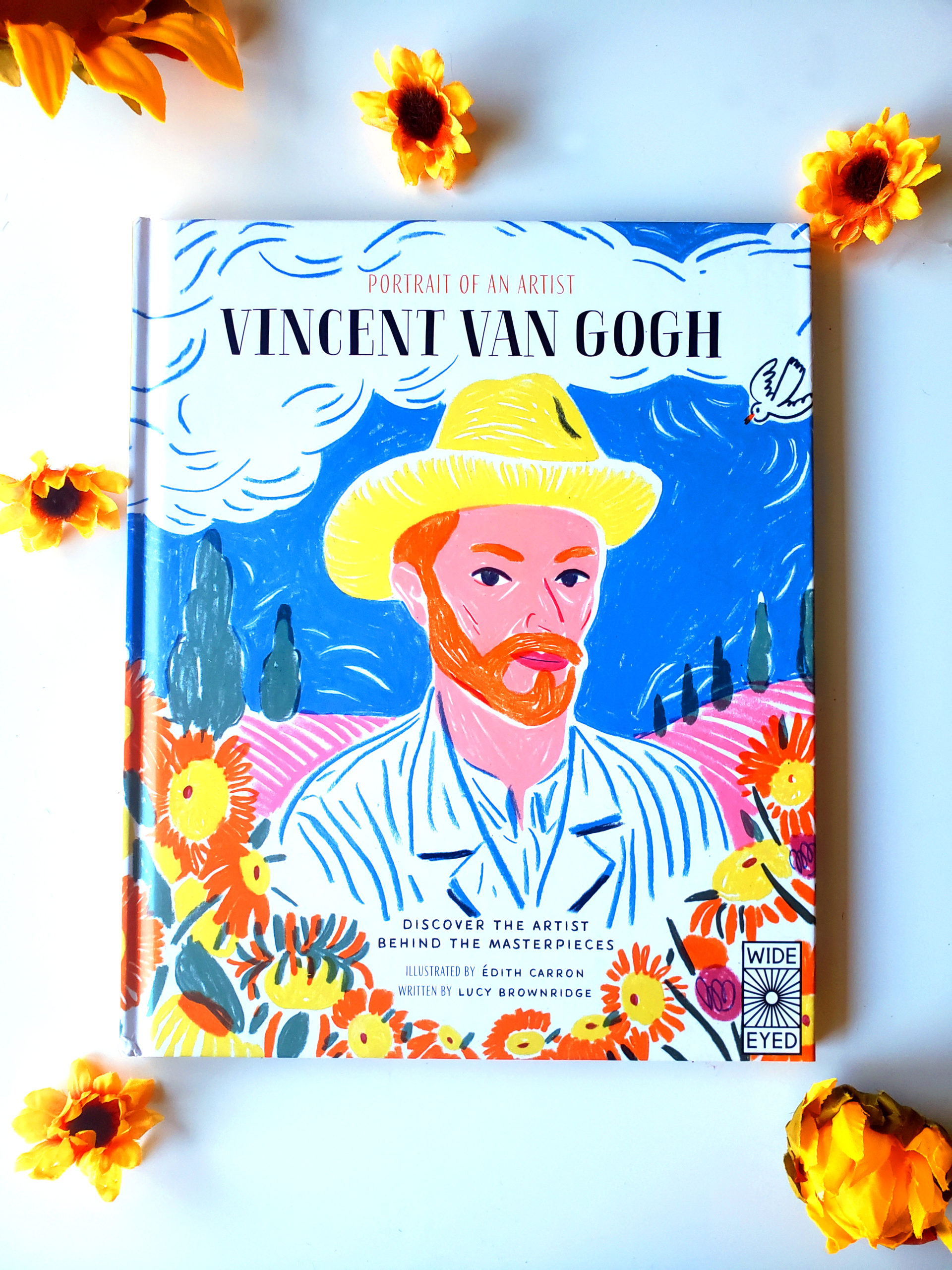
(PLEASE NOTE: This section may contain affiliate links for your convenience).
Portrait of An Artist: Vincent Van Gogh is a beautifully illustrated addition to this lesson.
The Portrait of An Artist series by Lucy Brownridge is one of my favorites for elementary-level art history.
(I recommended it for the Frida Khalo lesson plan as well).
The author takes an age-appropriate approach to some of the harsher details of the artist’s life without omitting them completely.
Van Gogh Art Project Idea for Elementary Students
This mixed-media Van Gogh art project is whimsical and fun!
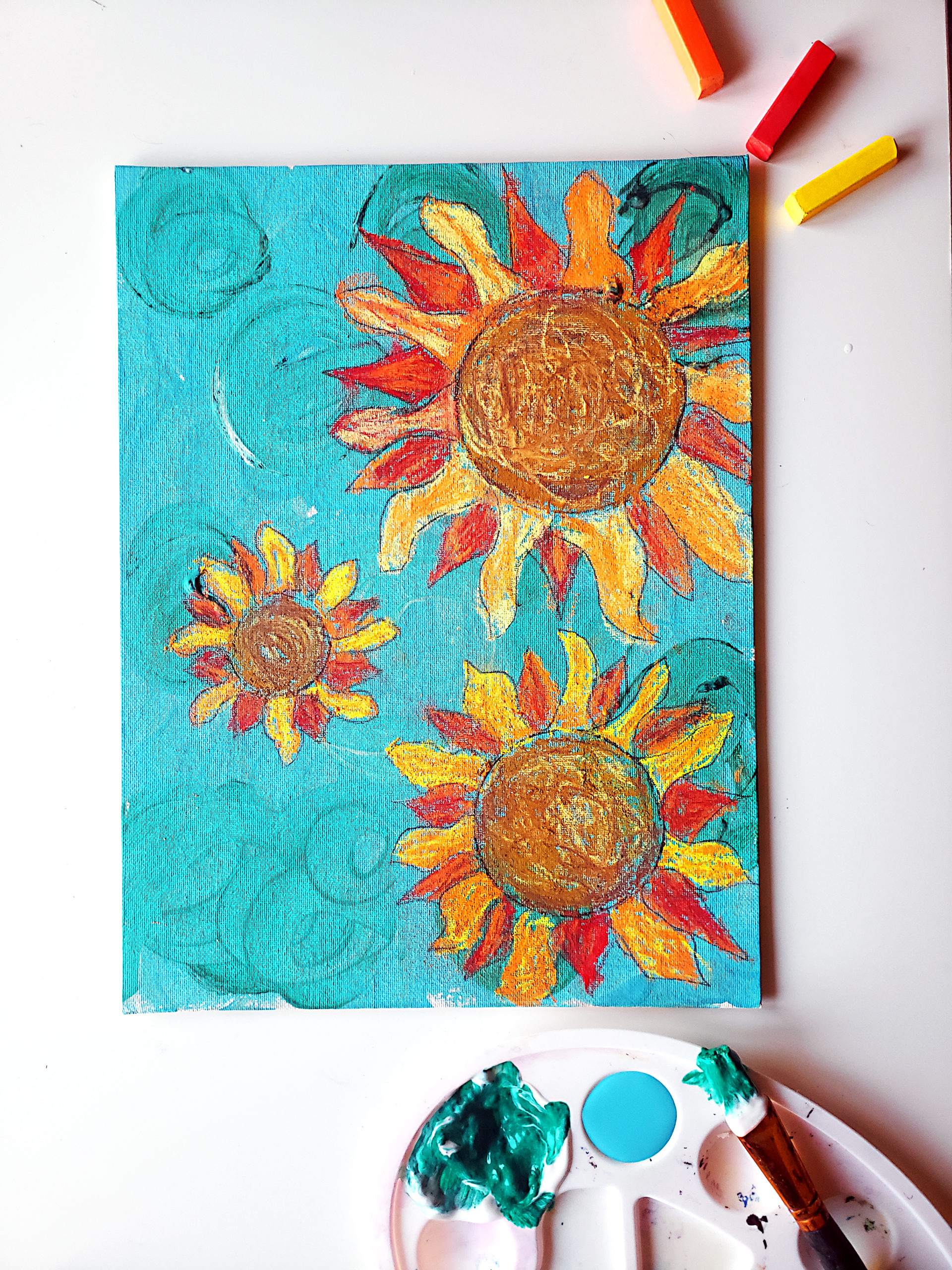
Materials:
-small canvases or art paper
-acrylic paint or watercolors
-paintbrushes
-pencils
-oil pastels
-circle stencils of varying sizes(or anything round that can be traced—I used drinking glasses and bottles)
Step 1: Paint the background.
Using acrylics, paint the background in cool colors. I encouraged the children to make swirls with the paint to give it some depth and texture.
Allow the background to dry completely before proceeding to step 2. This is a multi-class session project!
Step 2: Go around in circles.
Just kidding.
Have the kids trace circles in pencil. It looks best if there’s an odd number of circles and they’re different sizes.
Then, add the petals. They can be pointy, flame-shaped, like teardrops, ect.
Step 3: Fill in with oil pastels.
Using a warm color palette (oranges, yellows, reds), fill in the flower petals).
Then, fill in the center part of the flower with at least two shades of brown or gold (the more contrast, the better!).
All done!
I hope you enjoy this mini Van Gogh art history lesson.
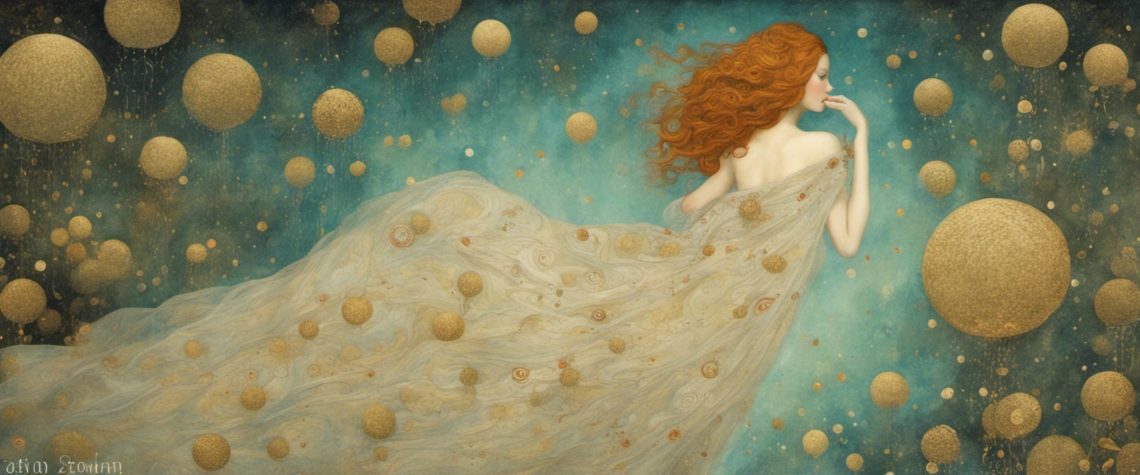
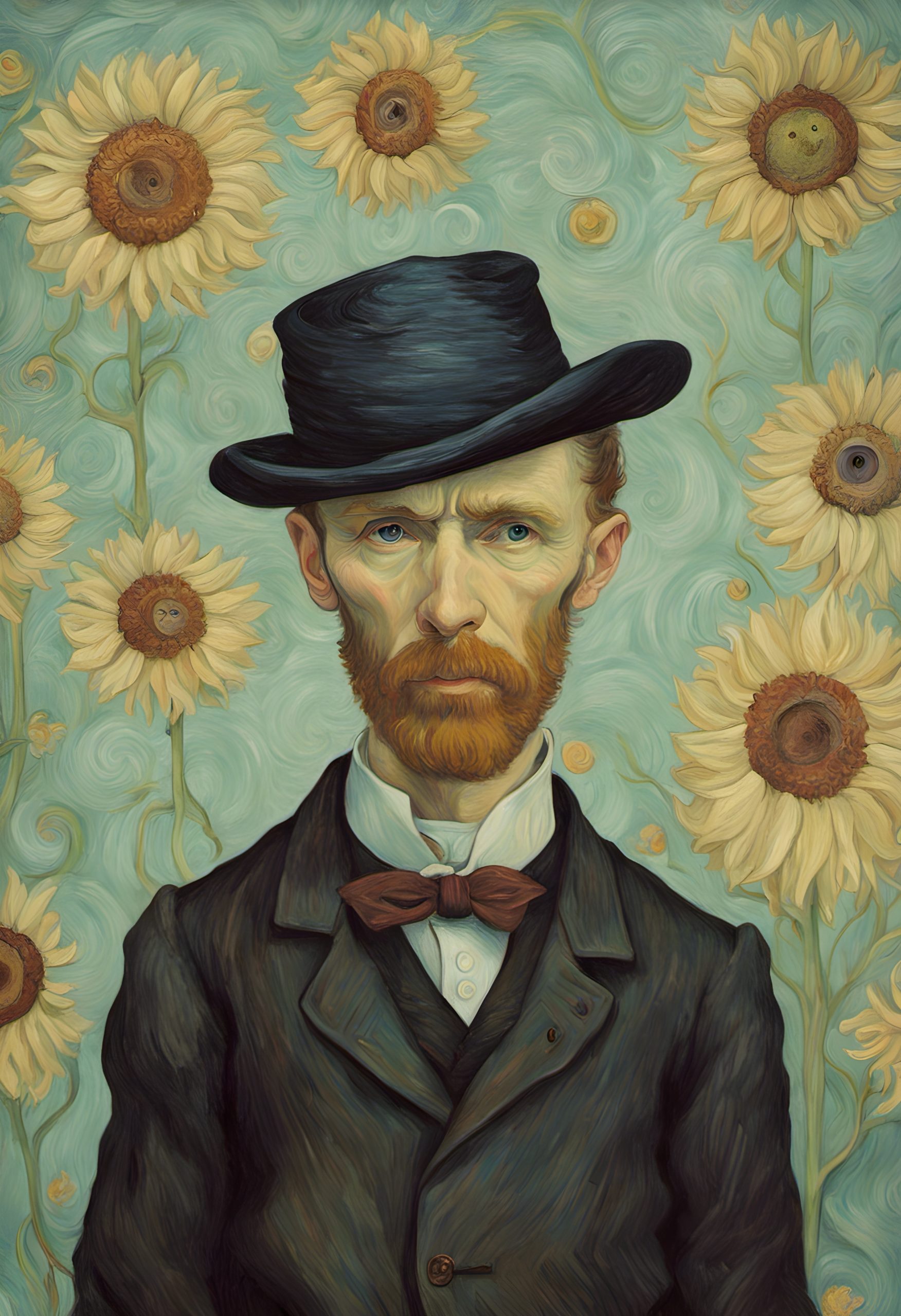
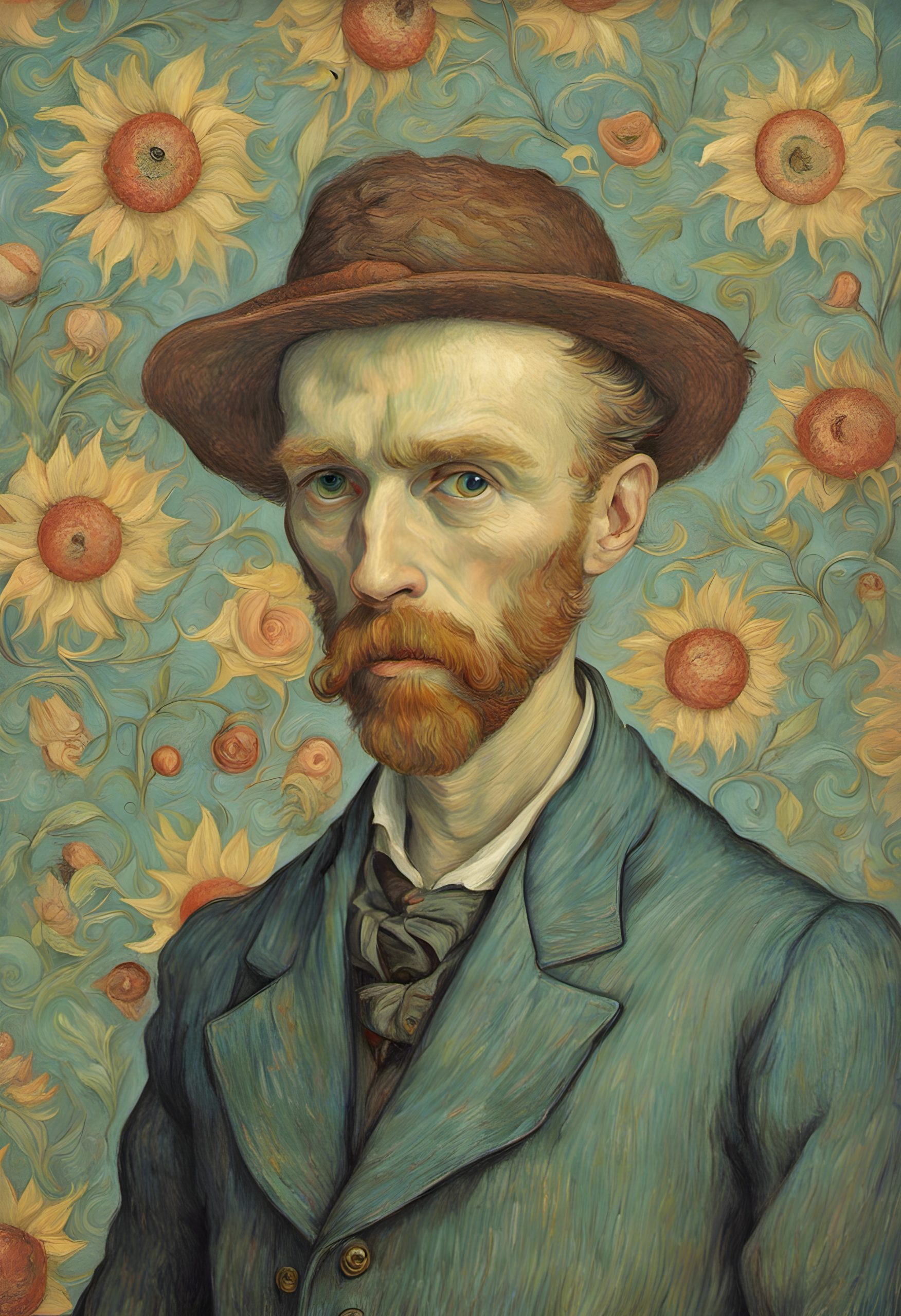
3 Comments